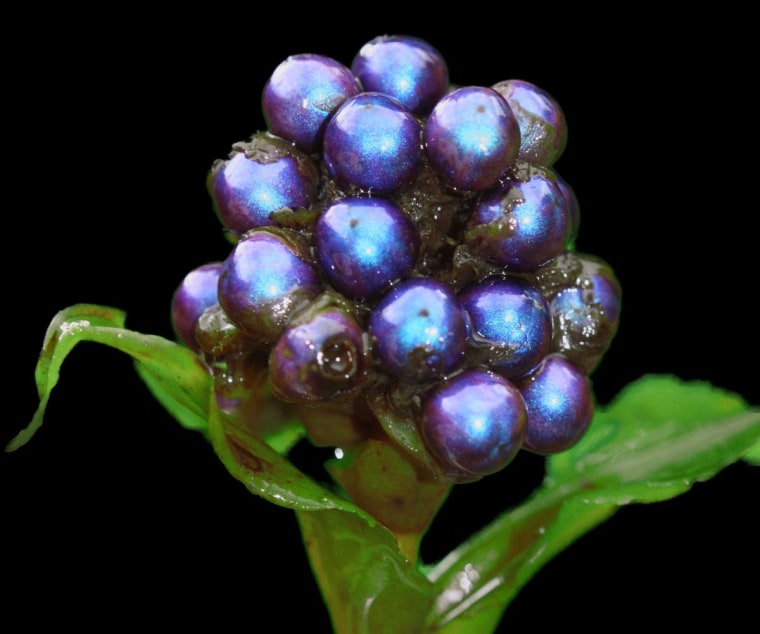Scientists have found nature's way of creating color that never fades, a technique they say could replace pigments used in industry with natural plant extracts in products from food coloring to security features in banknotes.
Layers of cellulose that reflect specific wavelengths of light — "structural color" found in peacock feathers, scarab beetles and butterflies — make a particularly intense blue in the Pollia condensata plant, scientists say.
Samples of the fruit in plant collections dating back to the 19th century had not lost any shine or intensity, they found.
"By taking inspiration from nature, it is possible to obtain smart multifunctional materials using sustainable routes with abundant and cheap materials like cellulose," said University of Cambridge physicist Silvia Vignolini.
"It is 10 times more intense and bright than any color achieved with a pigment," said Vignolini, who led the study with plant scientist Beverley Glover.
Although the fruit has no nutritional value, birds were attracted by its bright color, possibly as a decoration for their nests or to impress mates, helping in seed dispersal.
"This obscure little plant has hit on a fantastic way of making an irresistible, shiny, sparkly, multi-colored, iridescent signal to every bird in the vicinity, without wasting any of its precious photosynthetic reserves on bird food," said Glover.
And, unlike pigments, structural color does not fade over time as it is not broken down by absorbing light.
"Edible, cellulose-based nanostructures with structural color can be used as substitutes for toxic dyes and colorants in food," said Vignolini. The paper industry is already set up to extract and use cellulose and its processes could also be adapted for security labeling or cosmetics, she said.
"Cellulose-based structures have a really strong optical response and are completely inert in the human body," she said.
Another advantage of the technique is that the desired color can be achieved by adding layers in the structure to reflect different wavelengths, rather than buying new pigment.
Similar research by Peter Vukusic at Exeter University into the structure that creates color in butterfly wings has spawned a pigment-free photonic make-up from French cosmetics company L'Oreal.
"I saw how brilliant optically some of these structural colors are," Vukusic told Reuters. "Some species collected as far back as the 18th century are as bright today as freshly hatched butterflies."
Although some car companies, including BMW, have also exploited the phenomenon to produce iridescent paint that changes color when viewed from different angles, "this is nothing compared to what you see in nature," Vukusic said.
He said that if production challenges can be overcome, the abundance of cellulose — the basis of most green plant material — makes it a material with great potential.
The research was published Monday in the Proceedings of the National Academy of Sciences.
